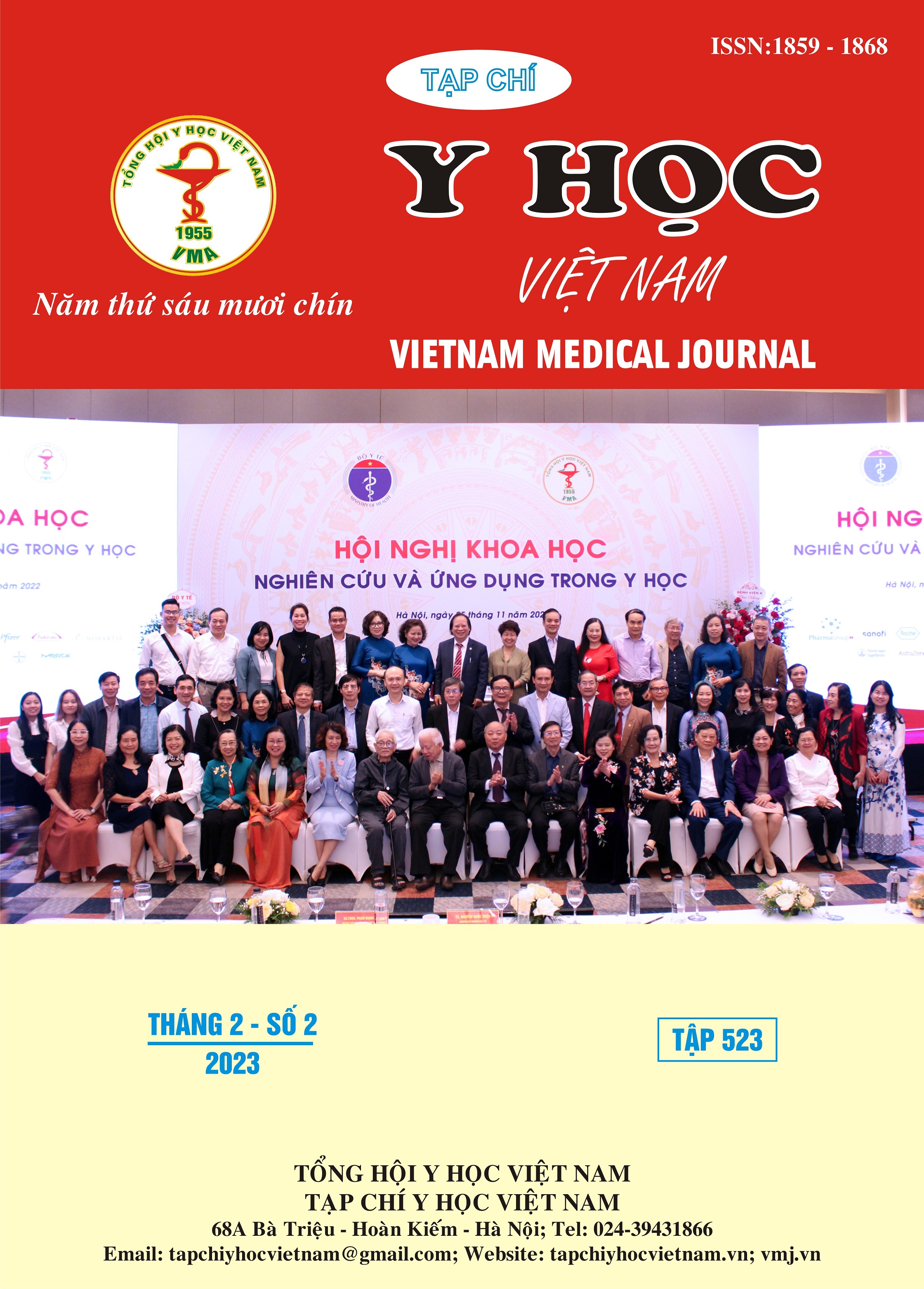STUDY ON SOME HEMODYNAMIC PARAMETERS IN PATIENTS WITH SEVERE INFECTION AND SEPTIC SHOCK USING USCOM MACHINE AT NGHE AN GENERAL HOSPITAL
Main Article Content
Abstract
Objective: Survey on some hemodynamic parameters in patients with severe infection and septic shock using USCOM machine at Nghe An Friendship Hospital. Subjects and methods: Prospective interventional descriptive study 43 patients diagnosed with severe sepsis and septic shock. Conclusion: The mean stroke volume index was low, the stroke volume variability was high, and the systemic vascular resistance was low in the septic shock group. There are 93.0% lack of translation; 67.4% decrease in stroke volume; there was 53.5% decrease in heart index. Low myocardial contractility accounted for 58.1%. There was 62.8% decrease in systemic vascular resistance and 11.6% increase in systemic vascular resistance.
Article Details
Keywords
USCOM: UltraSound Cardiac Output Monitor; Nghe An General Friendship Hospital
References
2. McLean B, Janice IZ et al (2007). Monitoring blood flow, oxygenation and acid-base status. In Fundamental critical care support. Society of Critiacl Care Medicine. Fourth edition. 6-1- 6.17.
3. Wongsirimetheekul T et al (2014). Non-invasive cardiac output assessment in critically ill paediatric patients. Acta Cardiological; 69(2):167-73.
4. Phạm Tuấn Đức (2011). Đánh giá thay đổi vận chuyển ôxy và tiêu thụ ôxy trên bệnh nhân sốc nhiễm khuẩn. Luận văn thạc sỹ y học, Trường Đại học Y Hà Nội. Tr 28-46
5. Vincent JL, Sakr Y, Sprung CL, Ranieri VM, Reinhart K, Gerlach H, Moreno R, Carlet J, Le Gall JR, Payen D (2006). Sepsis Occurrence in Acutely Ill Patients Investigators. Sepsis in European intensive care units: results of the SOAP study. Crit Care Med. 34:344-53.
6. Hernandez G, E, Boerma C, Dubin A, Bruhn A, Koopmans M, Edul VK, Ruiz C, Castro R, Pozo MO, Pedreros C, Veas E, Fuentealba A, Kattan E, Rovegno M, Ince C (2013). Severe abnormalities in microvascular perfused vessel density are associated to organ dysfunctions and mortality and can be predicted by hyperlactatemia and norepinephrine requirements in septic shock patients. Journal of Critical Care. 28(6), 358 -64.
7. Nguyễn Hữu Quân (2017). Nghiên cứu hiệu quả huyết động với sự hỗ trợ phương pháp PICCO trong xử trí sốc nhiễm khuẩn. Luận án tiến sỹ y học, Trường Đại học Y Hà Nội. tr13 -15.
8. Dellinger RP, Levy MM, Carlet JM et al (2008). Surviving Sepsis Campaign: international guidelines for management of severe sepsis and septic shock: 2008. Crit Care Med, 36 (1), 296-327.
9. Nguyễn Quốc Kính, Nguyễn Thị Thu Yến (2016). Đánh giá thay đổi huyết động đo bằng USCOM ở bệnh nhân phẫu thuật chấn thương được truyền dịch tinh thể và dịch keo trước gây tê tủy sống. Tạp chí y học thực hành, số 1015: 135- 140.
10. Phillips R, Paradisis M et al (2006). Assessment of the clinical utility of an ultrasonic monitor of cardiac output (the USCOM) and agreement with thermodilution measurement. Clinical care;12(3):209 – 213.


